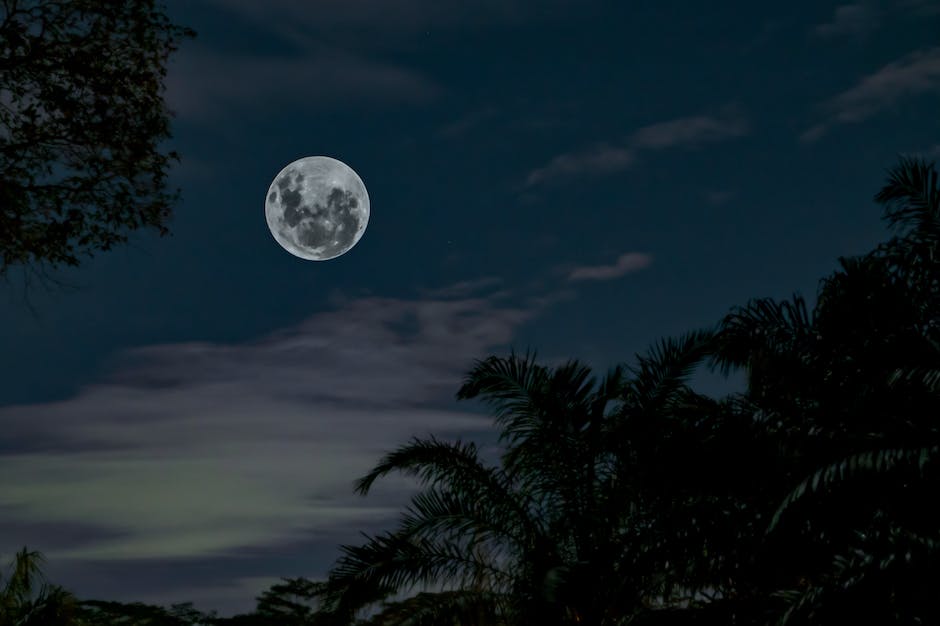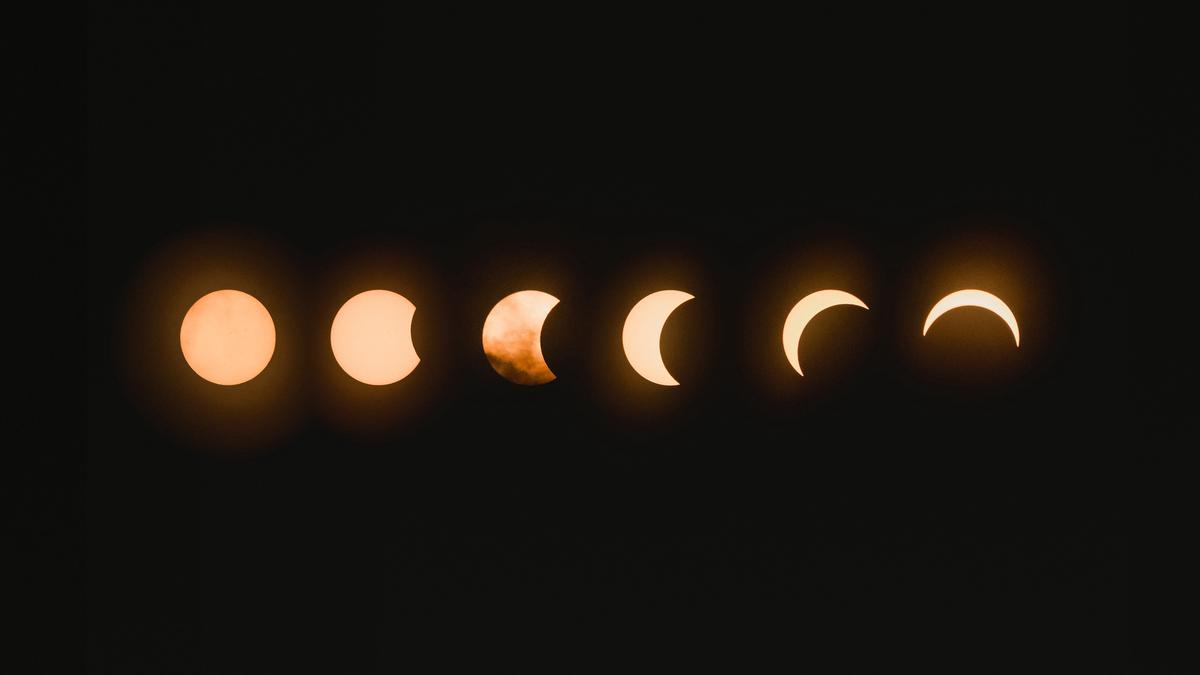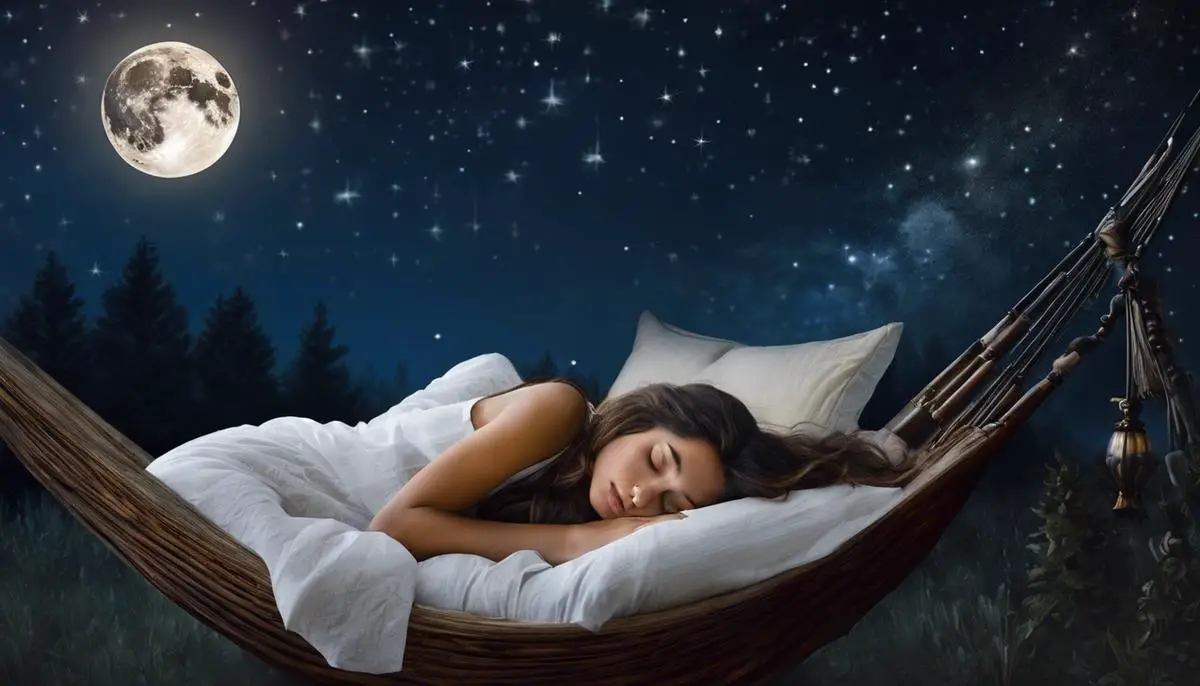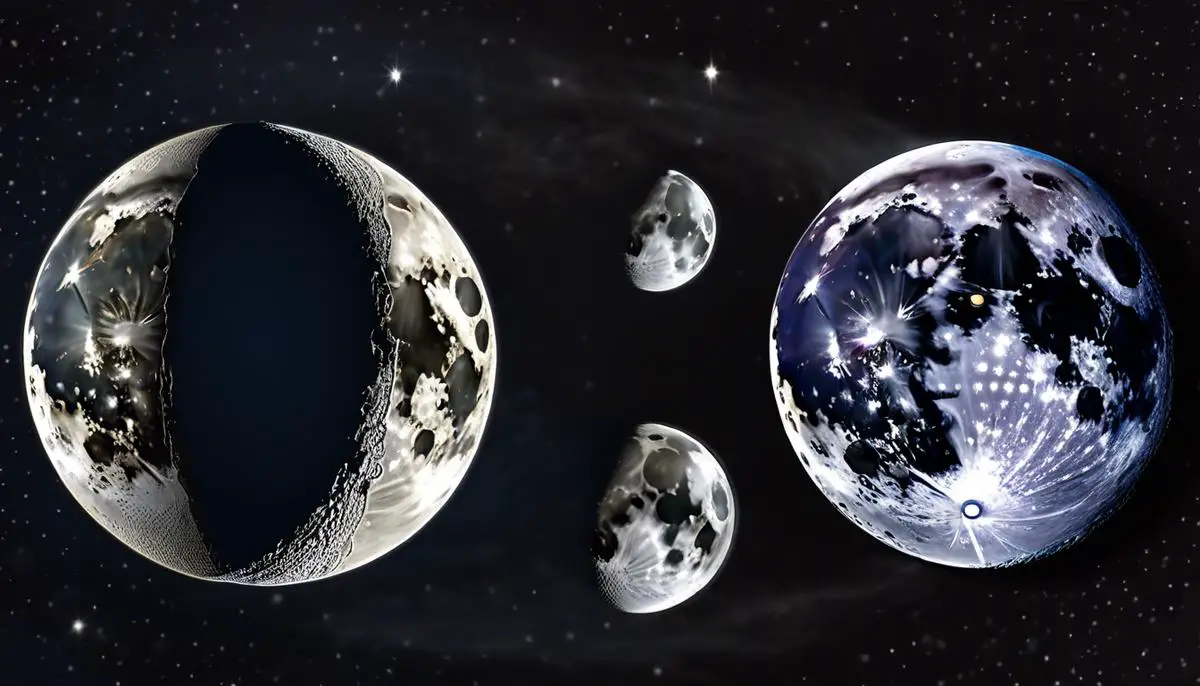The synchronicity of the human body with the environment has mystified scholars and health professionals for centuries. Amidst the waxing and waning of the moon lies a debate that touches on the very essence of our circadian rhythms: Does the full moon affect the patterns of our slumber? This essay delves into the celestial dance of the lunar cycles and their potential impact on human biology, specifically our sleep. As we peer through the lens of scientific research, we examine the physical mechanisms and empirical data that seek to illuminate the relationship between the full moon and our nightly rest. From the subtle shifts in our biological clocks to the more pronounced changes in our sleep architecture during the full moon, we explore the fabric of this phenomenon and its implications for our understanding of human circadian rhythms.
Lunar Cycles and Human Circadian Rhythms
Title: Lunar Influences on Human Sleep-Wake Cycles
The notion that celestial movements, particularly those of Earth’s nearest celestial neighbor, the Moon, might influence biological rhythms on our planet, is a topic that has captivated scientific inquiry for generations. The sleep-wake pattern, dominated by the circadian rhythm, is an essential physiological cycle in humans, crucial for maintaining various aspects of health and well-being. Contemporary discourse has begun to explore the intriguing possibility that lunar cycles, especially the full moon phase, could exert an influence on these rhythms.
The circadian rhythm, an internal time-keeping system, coordinates the sleep-wake cycle with the day-night cycle of our environment. It is widely known that environmental cues, like light and temperature, can adjust the circadian rhythm to synchronize with the Earth’s 24-hour day. However, the subtler cues of lunar illumination during a full moon have been proposed as a potential agent of disruption to this delicate balance.
Empirical studies have sought to elucidate the relationship between lunar phases and sleep patterns. Findings have suggested that during a full moon, individuals may experience alterations in sleep architecture—referring to the structure and distribution of sleep stages throughout the sleep period. The suggested modifications include prolonged sleep latency, which is the time it takes to fall asleep after going to bed, as well as a reduction in the overall sleep duration and variance in the time spent in specific sleep stages, particularly the rapid eye movement (REM) phase, which is associated with vivid dreaming.
Furthermore, an increase in nocturnal illumination from the full moon has been hypothesized to alter the production of melatonin, a hormone secreted by the pineal gland that induces sleepiness and is sensitive to light. The full moon’s brightness may reduce melatonin secretion, resulting in delayed sleep onset and a potential feeling of restlessness or a change in sleep quality.
There is, however, a need for caution in interpreting these findings. The studies conducted thus far have faced several methodological challenges, including small sample sizes, varying definitions of sleep disturbance, and differences in environmental light exposure among participants. Consequently, while there is a body of data that suggests a potential link between full moon phases and changes in human sleep-wake patterns, the evidence is not yet conclusive.
To fully understand these complex interactions, future research should aim to standardize data collection methods, control for confounding environmental variables, and incorporate larger, more diverse populations. Such rigorous scientific examination could pave the way for a more comprehensive understanding of the full moon’s role—if any—in modulating human circadian rhythms. Thus, while the narrative of lunar influence on human behavior has a place in folklore and anecdote, the scientific community remains vigilant in its pursuit of empirical clarity on the matter.

Sleep Patterns During Full Moon Phases
The nocturnal sky has, since time immemorial, been a source of mystery and fascination, not least for its impact on the slumber of earthly denizens. The full moon phase, a subject of particular interest within chronobiological studies, poses intriguing questions about its influence over human sleep patterns.
Sleep, a complex physiological process, is susceptible to the vicissitudes of environmental cues, including those from our lunar neighbor. Subsequent to the onset of a full moon, empirical studies have reported findings that invite contemplation and rigorous scrutiny. One such observation is the alteration in sleep timing. Data suggests a trend toward later bedtimes and a consequent shift in the sleep phase on nights illumined by a full moon. This delay in sleep onset corresponds with previous mentions of sleep latency alterations but stands distinct in its characterization of temporal shifts in sleep behavior.
Moreover, the presence of a full moon has been associated with nuanced variations in a person’s typical sleep profile. Research indicates that individuals may experience shorter sleep duration when the moon waxes full. This decrement in total sleep time may seem modest but is significant enough to warrant attention from those studying sleep health and disorders. Though adjusting for confounding variables, these changes have persisted across multiple studies, suggesting a lunar sleep effect that penetrates the variability of individual sleep patterns.
The spectral composition of moonlight might hold answers to observed perturbations in nocturnal rest. The amount and quality of light that humans are exposed to during a full moon phase are of a unique signature—one that contrasts with artificial lighting or ambient urban luminescence. Natural moonlight, direct or filtered, may play a distinct role in the modulation of night-time vigilance, thus affecting the very character of sleep—an area ripe for targeted inquiry.
It is paramount to appreciate that sleep is not merely an on-off state but a multidimensional experience encompassing various stages from light slumber to deep, restorative sleep, and rapid eye movement (REM) sleep. Existing literature hints at a redistribution of these stages during full moon cycles. Specifically, there is preliminary evidence indicating a reduction in deep sleep, identified as slow-wave sleep, which could elucidate why some individuals recall a less restful sleeping experience under full moon conditions.
The interaction between the moon’s phases and sleep has unveiled complexities that transcend the field of sleep research, embedding within the broader disciplines of biology and environmental science. An interdisciplinary approach, harnessing expertise from astronomy, chronobiology, and environmental physiology, amongst others, is essential to unravel the intricate mechanisms that underlie the moon’s sway over sleep.
As science marches forward, the fascination with lunar influences continues to inspire a thicket of hypothesis-driven research, each study shedding light on our understanding of the cosmic-biological interface. The nocturnal ballet between moon and mankind is yet to be fully elucidated, with the phenomenon of lunar-related sleep variations poised on the cusp of deeper discovery. With meticulous attention to experimental design and interdisciplinary collaboration, strides will be made in decoding the secrets of the night sky—secrets that have whisperingly shaped the rhythm of human slumber since antiquity.

The Debate on Full Moon Effects
Given the multifaceted dimensions of the full moon’s influence on sleep, current scientific consensus is cautious, yet increasingly focused on measurable phenomena. To elucidate, the full moon’s phase presents a unique interplay of increased brightness and potential gravitational effects that could perturb the intricate human sleep cycle. Habitual exposure to artificial lighting has compounded the complexity of isolating the moon’s contributions, necessitating studies that adequately compensate for such environmental factors.
Recent inquiries have begun to address the spectral quality of moonlight and its perceptual impact on humans during nocturnal periods. Moonlight possesses a bluish tint due to Rayleigh scattering, the same atmospheric process that renders the sky blue. This spectrum may interact with photosensitive retinal ganglion cells, distinct from rods and cones, which play a pivotal role in regulating biological clocks. Subsequently, any resultant alterations in sleep timing or architecture during the full moon phase must be scrupulously evaluated, with special consideration given to the integration of light-sensitive pathways in the brain.
Quantitative analysis of sleep variations, specifically the redistribution of sleep stages, has also garnered attention. Preliminary evidence has pointed toward minor yet discernible changes in rapid eye movement (REM) sleep and non-REM sleep, which are foundational to cognitive function and overall health. However, the statistical significance and reproducibility of these findings remain contentious subjects within the sleep science community.
Studying the impact of lunar cycles on sleep also illustrates the inevitable intersection of various scientific disciplines, from chronobiology to neurology, and from environmental science to astronomy. The synergistic approach of interdisciplinary research is essential in parsing the subtle influences of external celestial events on human physiology.
Notwithstanding the compelling nature of historical and anecdotal accounts paired with preliminary research insights, the present scientific attitude is one of cautious empirical inquiry. Data must be meticulously gathered, anomalies stringently investigated, and findings rigorously peer-reviewed. It is through such thoroughness in experimentation and openness in interdisciplinary collaboration that science may, in time, unravel the enigmatic relationship between lunar cycles and human slumber.

Photo by tegethoff on Unsplash
Methodology in Moon Phase Sleep Research
Understanding the Full Moon’s Influence on Sleep: A Comparative Analysis of Research Methodologies
In the nuanced exploration of the full moon’s relation to sleep, researchers must judiciously select their methodologies to yield precise and informative findings. A pivotal consideration in this realm of study is the broad array of approaches taken to investigate lunar effects on nocturnal rest. This article endeavors to shed light on the diversity of these research techniques and the consequential implications they bear for our understanding of the moon’s role in sleep dynamics.
One noteworthy methodology involves the scrutinization of large-scale population sleep quality data sets juxtaposed against lunar phases. Such studies capitalize on big data analytics to discern patterns possibly occluded in smaller sample sizes. By contrast, smaller controlled laboratory experiments provide the advantage of isolating subjects from extraneous variables and zeroing in on specific aspects of sleep influenced by the lunar cycle, though this may not represent real-world conditions accurately.
Actigraphy, a non-invasive method of monitoring human rest/activity cycles, presents another strategy. By equipping participants with wearable devices that track movement and ambient light exposure, researchers can infer sleep patterns and correlate this data with the lunar calendar. The advantage lies in the ability to record sleep over extended periods in naturalistic settings, albeit at the cost of direct sleep stage measurement accuracy.
In the domain of polysomnography, the gold standard for sleep study, participants undergo rigorous monitoring that includes brain wave activity, eye movements, and muscle tension. This method permits an intricate examination of sleep architecture variations that the full moon may precipitate. However, the artificial environment of the sleep laboratory and the potential for first-night effects to bias results call for caution in interpretation.
Furthermore, the incorporation of questionnaires and self-reported sleep diaries adds a subjective lens through which the impact of the full moon on sleep may be appraised. Though valuable for capturing personal experiences, these tools are susceptible to recall biases and subjective interpretations of sleep quality.
Studies deploying these varied methodologies diverge in their findings. Some suggest a tangible shift in sleep structure during the full moon, while others report negligible or non-existent correlations. These discrepancies highlight the imperative for congruence in research design to reach a consensus. The inclusion of environmental covariates, such as urban light pollution, further complicates the standardization of research across diverse settings.
Moreover, the confounding effect of individual differences, such as age, gender, and chronotype, mandates a tailored analytical approach when segmenting data for these subgroups. As such, the intersection of demographic factors with lunar influences requires adept statistical handling to disentangle the intricate web of interaction effects.
The synthesis of quantitative data with qualitative narrations offers a comprehensive lens, yet the reconciliation of these divergent types of data remains a challenge. The interplay of subjective sleep satisfaction with objectively measured disruptions during the full moon phase, for instance, presents a rich tapestry of insights.
The gravitas of this collective scientific endeavor lies in the synthesis of methodological rigor with interdisciplinary insights. As studies incorporate neurobiological, environmental, and psychological perspectives, the collective goal is to construct a cohesive model elucidating the full moon’s enigmatic grasp on human slumber. This concerted scholarly dedication not only enriches our comprehension of circadian biology but also pioneers our appreciation for the intricate relationship humanity shares with the cosmos.

Future Research Directions for Full Moon Sleep Studies
Emerging Trends in Lunar Phases and Sleep Patterns Research
As the scientific inquiry advances into understanding the nuanced correlations between lunar phases and humans’ sleep patterns, researchers are examining genetic factors contributing to individual variability in sleep during different lunar cycles. Studies of genetic polymorphisms related to melatonin receptors and circadian clock genes are leading to a more personalized comprehension of sleep disruptions associated with lunar phases. This genetic insight adds a new level of complexity, challenging the one-size-fits-all model of lunar effects on sleep.
Simultaneously, advancements in wearable technology and machine learning are bolstering research capabilities. Enhanced by the precision of biosensors, which track physiological changes with exceptional granularity, coupled with algorithms capable of detecting patterns amid vast amounts of data, studies are beginning to delineate the subtle influences the moon may exert on sleep.
Another noteworthy trend is the exploration of the moon’s gravitational effects on human biology. While light has been a focal point in previous research, the moon’s gravitational pull—modulating Earth’s magnetosphere and possibly affecting the human body—presents an intriguing frontier. Groundbreaking studies focus on bioelectric and hormonal shifts that align or counteract with lunar tides, examining closely how these fluctuations may translate into changes in sleep quality and duration.
Ecopsychology’s role is also gaining prominence, as this interdisciplinary approach considers the psychological impact of natural lunar cycles on human behavior and well-being. This holistic perspective recognizes that the environment, including the celestial dance of the moon, on a macro scale could be intertwined with sleep health.
Future directions suggest an exciting and increasingly detailed investigation into the lunar-sleep conundrum. New research avenues may include the integration of satellite telemetry and in situ lunar measurements, exploring if and how direct lunar environmental factors remotely influence sleep on Earth. Furthermore, there is an emerging conversation about space travel and its implications on circadian rhythms—pointing to research applications that are as pertinent on Earth as they are in the growing field of space health sciences.
The perennial pursuit for a deeper understanding of lunar phase impacts on sleep continues to be anchored by a commitment to rigorous, methodologically sound approaches. The blossoming of this scientific domain is poised not only to unveil more about our relationship with the natural world but also to potentially inform the development of tailored sleep interventions that harmonize with the intricate biological symphony of life on Earth.

As the light of our nearest celestial neighbor wanes and the night sky darkens once more, we are reminded of the intricate interplay between nature and human physiology. The exploration into the full moon’s sway over our nocturnal patterns is far from over; it beckons future researchers to delve deeper, armed with cutting-edge technology and a plethora of unanswered questions. The quest to unravel the mysteries of our circadian rhythms in relation to the lunar cycle continues to inspire, challenge, and enrich our comprehension of human sleep. With each new study and technological breakthrough, we edge closer to unlocking the secrets of the night sky and its hold on the rhythms of life.
![]()
